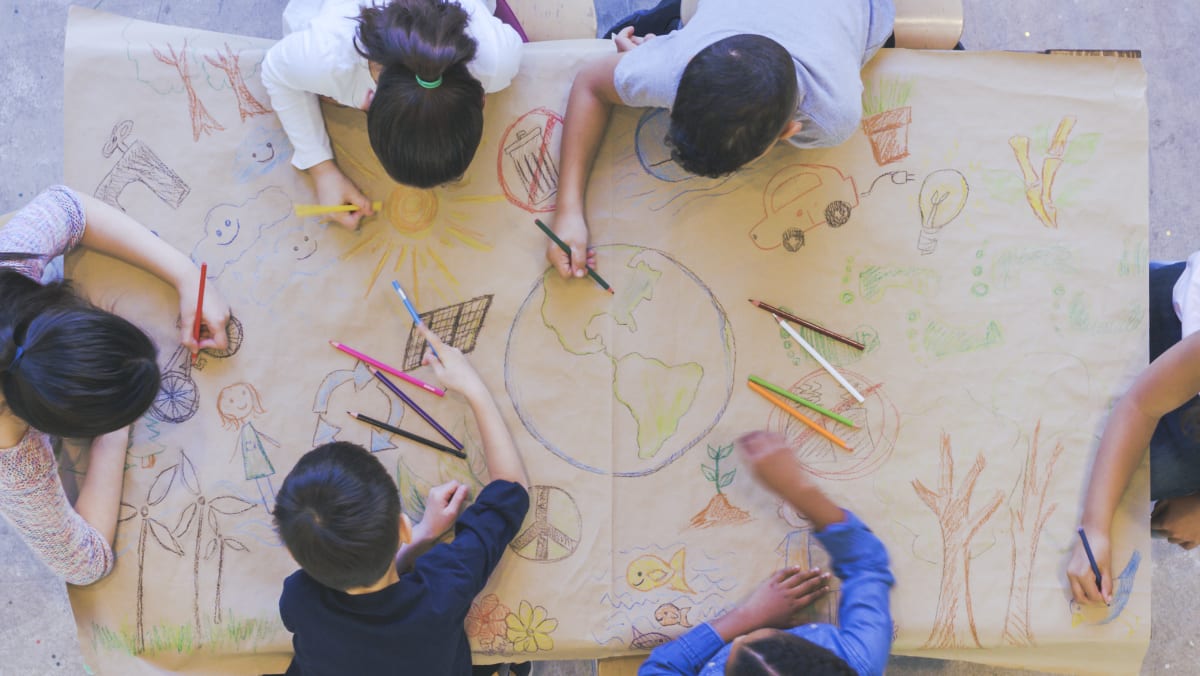
CLIMATE MATERIALS FOR CHILDREN
The lack of government-mandated climate education has opened the door to education entrepreneurs to fill a gap.
The founders of Earth Warriors, a global early childhood education curriculum, noticed a lack of climate education content available to any children under the age of 11.
Keya Lamba and Shweta Bahri have designed materials suitable for those aged between 3 and 7, which they hope will be adopted by schools around the world. Their courses have been peer reviewed and supported by climate scientists.
“Our whole mission and belief is that if you build these sustainable habits at a young age, then being a conscious citizen that cares about the planet comes as naturally to these kids as brushing their teeth,” Lamba said.
“There’s a lot of evidence that shows this is true. It can also nudge the adults around them as well,” she said.
"We try to show that kids are the ones demanding and making the changes. Climate change education has to be everywhere at every age group. It’s so critical and it’s surprising that it’s not taken very seriously or urgently.”
They aim to challenge assumptions that learning about climate change is too complex or daunting for children, and eventually advocate for governments to include this type of material themselves.
From their research, they say there is no formal inclusion of climate education in Southeast or South Asia. But they first plan to deliberately target schools with higher fees, like those that use international curriculums.
“We made a very conscious decision. Research shows that it’s people from higher income backgrounds that are contributing a lot more to climate change than people from lower income backgrounds,” Bahri said.
Children are already highly exposed to the impacts of climate change. The recently released Children’s Climate Risk Index from UNICEF found that more than 99 per cent of children are exposed to at least one major climate and environmental hazard, shock or stress, “creating a child’s rights crisis”.
Climate impacts such as flooding, cyclones, water scarcity, disease and air pollution overlap and compound in many parts of the world. Children in those often-poor parts of the world face even more future risks.
It is a further reason why experts want to accelerate the ability of young people to contribute to solutions and feel empowered to tackle these inherited issues.
“There’s a growing recognition that we owe something to them, that they have a voice and a seat at the table,” Rajakumar of Climate Governance Malaysia said.
“And there’s no silver bullet. There’s no dashboard, no roadmap, so why not invite the children to the table as well?”
https://news.google.com/__i/rss/rd/articles/CBMibWh0dHBzOi8vd3d3LmNoYW5uZWxuZXdzYXNpYS5jb20vc3VzdGFpbmFiaWxpdHkvY2xpbWF0ZS1jaGFuZ2UtZWR1Y2F0aW9uLXNvdXRoZWFzdC1hc2lhLXN5bGxhYnVzLWNvcDI2LTIxOTY2ODbSAQA?oc=5
2021-09-25 22:00:15Z
CBMibWh0dHBzOi8vd3d3LmNoYW5uZWxuZXdzYXNpYS5jb20vc3VzdGFpbmFiaWxpdHkvY2xpbWF0ZS1jaGFuZ2UtZWR1Y2F0aW9uLXNvdXRoZWFzdC1hc2lhLXN5bGxhYnVzLWNvcDI2LTIxOTY2ODbSAQA
Tidak ada komentar:
Posting Komentar